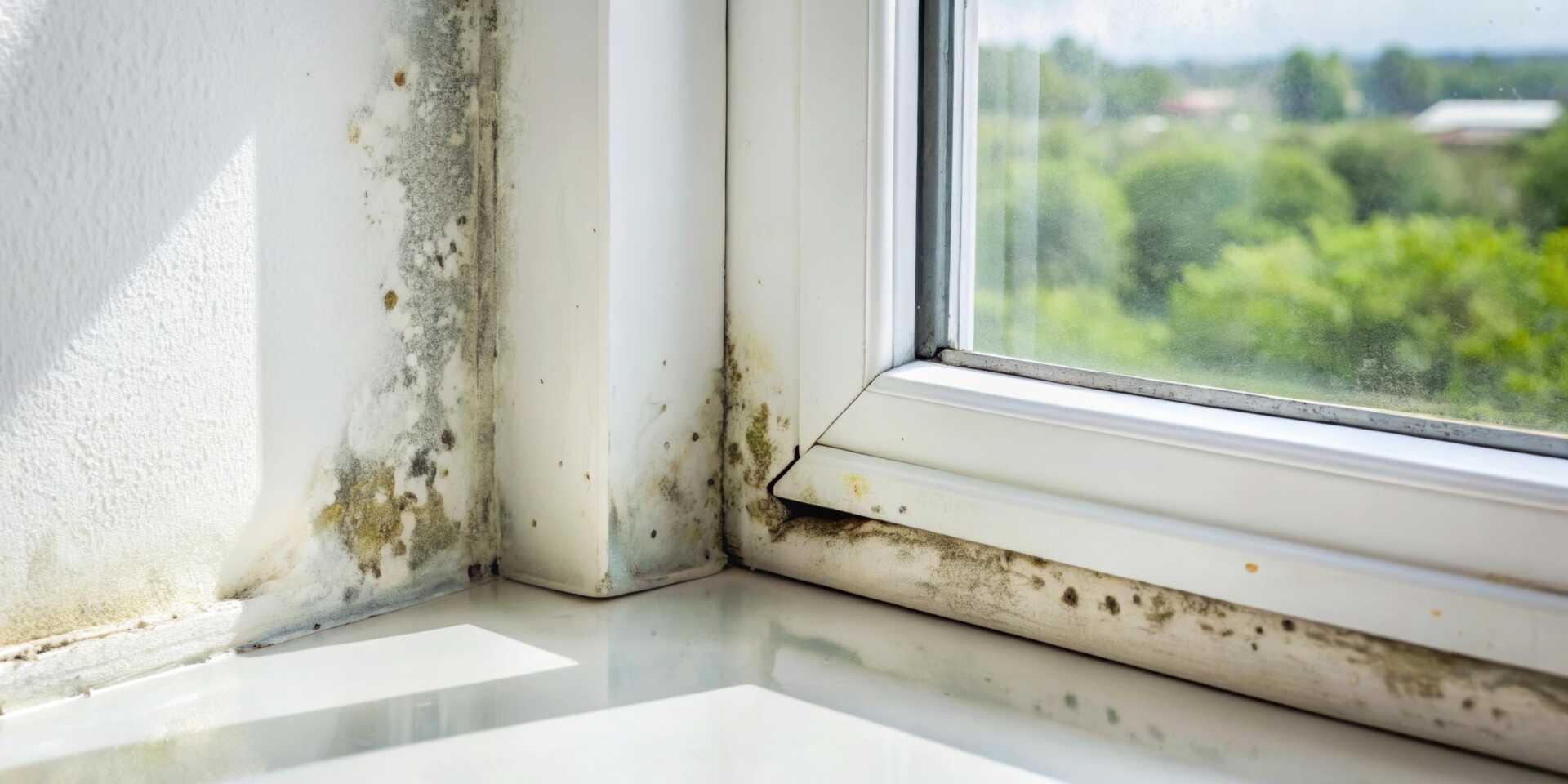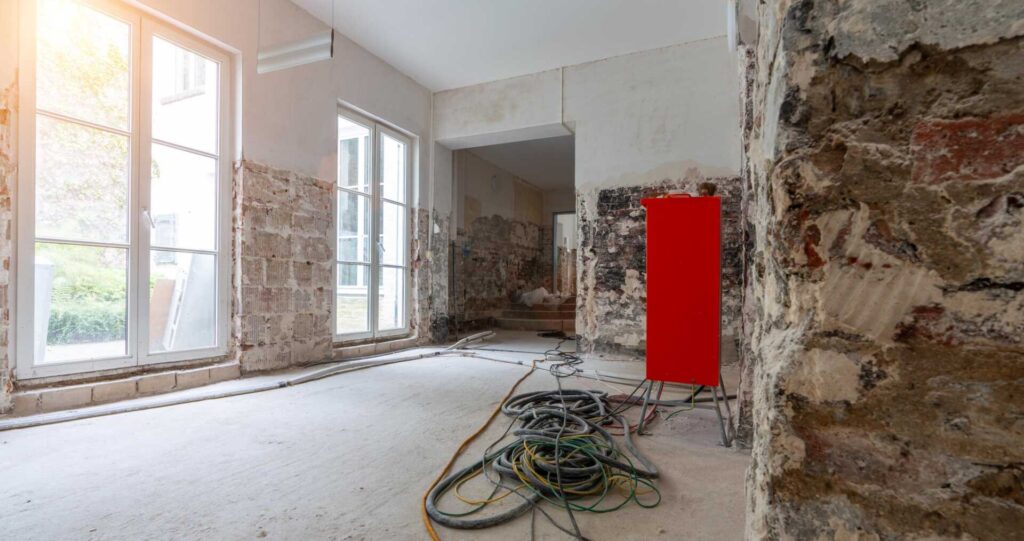Contents
You might be surprised by how easily mold can sneak into your home, even in the cleanest of spaces. By incorporating a few simple yet impactful strategies, you can greatly diminish the risk of mold growth and safeguard your indoor environment. From moisture control techniques to regular maintenance habits, there are practical steps you can take to keep mold at bay. So, are you ready to uncover the secret to a mold-free home and safeguard your family’s well-being?
Understanding Mold Growth Factors
When understanding mold growth factors in your home, it’s essential to be aware of the key elements that contribute to mold development. Mold requires three main factors to thrive: moisture, warmth, and organic material.
Moisture is the most critical factor, as mold spores need a damp environment to germinate and grow. Leaks in pipes, roofs, or even high humidity levels can create the perfect breeding ground for mold.
Warmth also plays a significant role in mold growth, with temperatures between 77 and 86 degrees Fahrenheit being ideal for mold spores to multiply rapidly. Additionally, mold feeds on organic materials such as wood, paper, or fabric, making these items susceptible to mold infestations.
Moreover, poor ventilation can exacerbate mold growth by trapping moisture indoors. Areas like bathrooms, kitchens, and basements are common hotspots for mold due to their higher humidity levels and lack of ventilation.
Dust and dirt can also provide nutrients for mold to grow on, so keeping your home clean can help prevent mold from taking hold. Furthermore, air conditioning units and dehumidifiers can help regulate humidity levels and inhibit mold growth.
Controlling Moisture Levels Indoors
Controlling moisture levels indoors is crucial to effectively preventing mold growth in your home. Excess moisture provides the perfect breeding ground for mold spores to thrive and multiply. To combat this, start by fixing any leaks in your home, whether it’s a leaky roof, plumbing issue, or malfunctioning appliance. Additionally, ensure proper ventilation in areas prone to moisture build-up, such as bathrooms, kitchens, and basements.
Using a dehumidifier can also help maintain ideal humidity levels indoors, ideally between 30-50%. Regularly empty and clean the dehumidifier to prevent mold growth within the device. When cooking or showering, use exhaust fans or open windows to allow moisture to escape outdoors. Be vigilant in monitoring areas where moisture tends to accumulate, such as under sinks, around windows, and in basements.
Consider investing in a moisture meter to keep track of humidity levels in different areas of your home. This tool can help you identify problem areas that may require additional attention. Remember to promptly address any signs of water damage, no matter how minor they may seem. By taking these proactive steps to control moisture levels indoors, you can significantly lessen the risk of mold growth and maintain a healthy living environment for you and your family.
Proper Ventilation and Airflow
Controlling moisture levels indoors plays a significant role in mold prevention, and one key aspect of this control is maintaining proper ventilation and airflow throughout your home. Proper ventilation helps reduce humidity levels, which in turn discourages mold growth. Here are some tips to ensure sufficient ventilation and airflow in your living space:
Use Exhaust Fans: Install and use exhaust fans in high-moisture areas like bathrooms and kitchens. These fans help remove humid air, preventing it from settling on surfaces and creating a breeding ground for mold.
Open Windows: Whenever weather permits, open windows to allow fresh air to circulate throughout your home. This simple act can help reduce moisture buildup and improve air quality.
Utilize Dehumidifiers: In areas where high humidity is a recurring issue, consider using dehumidifiers to maintain the best moisture levels. This can be particularly beneficial in basements or areas prone to dampness.
Check Attic Ventilation: Proper attic ventilation is essential in preventing moisture buildup that can lead to mold growth. Make sure your attic is adequately ventilated to allow for proper airflow, reducing the risk of mold formation.
Regular Inspection and Maintenance
Regular examination and upkeep are crucial elements in mold prevention in your living space. By being proactive and dealing with problems promptly, you can notably diminish the likelihood of mold proliferation. Here are some key points to ponder for efficient inspection and maintenance:
| Location | Frequency | Tasks |
|---|---|---|
| Loft | Annually | Inspect for leaks, adequate insulation, and vents |
| Cellar | Biannually | Check for moisture, fissures, and ventilation |
| Heating, Ventilation, and Air Conditioning (HVAC) System | Quarterly | Replace filters, cleanse ducts, examine for leaks |
| Roof | Biennially | Search for absent shingles, indications of water damage |
Regularly examining these areas and performing necessary upkeep duties can aid in averting mold issues before they worsen. For instance, promptly dealing with a minor leak in the loft can prevent extensive water damage and mold development. Similarly, ensuring proper airflow in the cellar can reduce the accumulation of moisture, a common catalyst for mold.
Effective Cleaning and Disinfecting
As you maintain a watchful eye on your property for potential mold risks, a key aspect of your defense strategy lies in the realm of efficient cleaning and disinfecting.
Regular Cleaning Schedule: Establish a routine cleaning timetable to prevent mold buildup in moist areas like bathrooms, kitchens, and basements.
Use Mold-Fighting Cleaners: Opt for cleaning products with mold-combating ingredients such as hydrogen peroxide, vinegar, or commercial mold cleaners.
Focus on Moisture Control: Address any leaks or excess moisture promptly to prevent mold growth and create an inhospitable environment for spores.
Ventilation is Key: Ensure proper ventilation in areas prone to moisture accumulation to promote air circulation and reduce humidity levels.
Effective cleaning and disinfecting practices are essential in mold prevention within your home. By staying proactive and incorporating these strategies into your regular household maintenance, you can create a less welcoming environment to mold growth.
Final Thoughts
By implementing these proven mold prevention tips, you can effectively safeguard your home against mold growth. While some may argue that mold prevention requires too much effort, the reality is that a little maintenance now can save you from costly mold remediation in the future. Remember, controlling moisture levels, proper ventilation, regular inspections, and effective cleaning are key to keeping your home mold-free. Stay proactive and protect your home from mold infestations.




